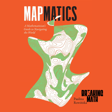
The Discovery of the Largest Prime Number: M136279841
In this exciting episode of Breaking Math, we explore the groundbreaking discovery of the largest prime number ever found—M136279841, a Mersenne prime with over 41 million digits! Join us as we dive deep into the story behind this astonishing mathematical achievement, led by Luke Durant, a volunteer from the Great Internet Mersenne Prime Search (GIMPS) project.
Discover how Mersenne primes work, why they’re so important to the world of mathematics, and how cutting-edge technology like GPUs has revolutionized the search for these massive numbers. We also discuss the critical role that prime numbers play in cryptography and online security, making this discovery relevant far beyond just the realm of theoretical mathematics.
Learn about the global collaborative effort that made this record-breaking discovery possible, and find out how you can join the hunt for the next giant prime! Whether you're a math enthusiast, a tech geek, or just curious about the wonders of numbers, this episode is packed with insights that will inspire you to think about prime numbers in a whole new way.
Key Takeaways:
- The discovery of M136279841, a prime number with 41,024,320 digits.
- The role of Luke Durant and the GIMPS project in pushing the boundaries of prime number research.
- How GPUs are transforming the way we discover massive primes.
- The importance of prime numbers in modern cryptography and technology.
- The connection between Mersenne primes and perfect numbers.
Links Mentioned:
- Join the GIMPS project and search for the next prime: www.mersenne.org/download
- Learn more about Mersenne primes: Mersenne Prime History
Become a patron of Breaking Math for as little as a buck a month
Follow Breaking Math on Twitter, Instagram, LinkedIn, Website, YouTube, TikTok
Follow Autumn on Twitter and Instagram
Follow Gabe on Twitter.
Become a guest here
email: breakingmathpodcast@gmail.com



















